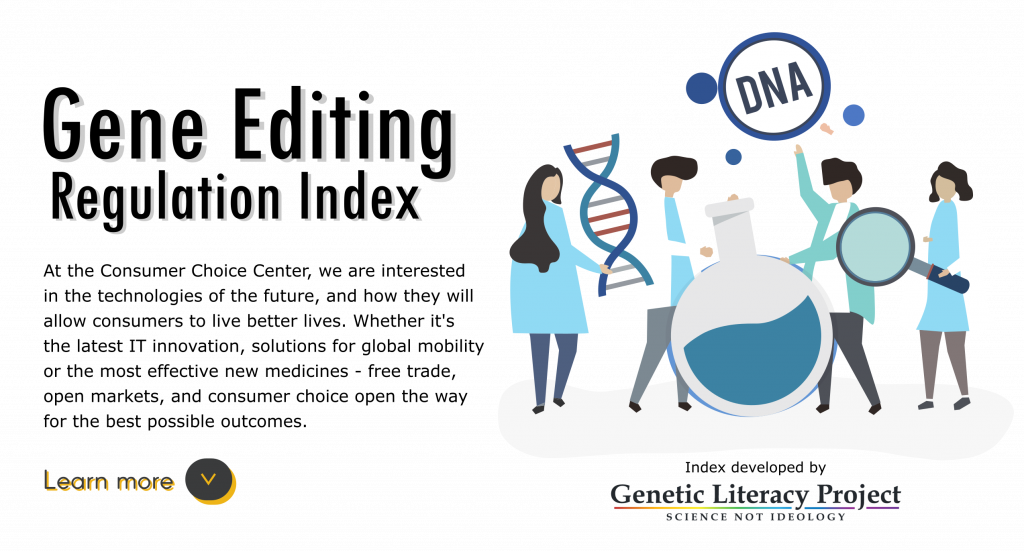Crops/Food:
Gene editing of plants and food products. Research and development has mostly focused on disease resistance, drought resistance, and increasing yield, but more recent advances have produced low trans-fat oils and high-fiber grains.
Animals:
Gene editing of animals, not including animal research for human drugs and therapies. Fewer gene edited animals have been developed than gene edited crops, but scientists have developed hornless and heat-tolerant cattle and fast-growing tilapia may soon be the first gene edited animal to be consumed.
*Gene editing regulated under existing legislation with no unique restrictions, except Argentina, which passed new, flexible regulations. / **Decrees under consideration, but not yet passed, to regulate gene-edited crops or animals as conventional.
Therapeutic:
Gene editing of adult human cells, including gene therapy and stem cell therapy, that is used to treat and cure disease. Recent breakthroughs include
CAR T-cell therapy, which uses patients’ own immune cells to treat their cancer.
Germline:
Gene editing of the human embryo or germline that results in genetic changes that are passed down to the next generation. This type of gene editing is the most controversial because changes are inherited and because it could theoretically be used to create “designer babies”. A Chinese scientist announced in 2018 that he had successfully edited twins that were brought to term. International backlash from the announcement has resulted in China and other countries working to clarify regulations on germline gene editing.
*Gene and stem cell therapies regulated as phamaceuticals with no additional restrictions. / **Decrees under consideration for gene and stem cell therapies that would not require unique regulations beyond current restrictions on pharmaceuticals.
Gene Drives:
Genetic engineering technology used to transmit a characteristic throughout a wild population. For example, it can be used to develop mosquitoes that only have female offspring. If released into the wild, these mosquitoes would breed with wild malaria-carrying mosquitoes and over time would eliminate the population. Scientists are interested in using this technology to help eradicate disease-carrying insects and control invasive species, but questions about how gene drives will be directed and controlled are still being fleshed out.
*Gene drives not specifically regulated. / **Decrees under consideration that would flexibly regulate.



